13. Leash wisely.
The leash that works well for road running with Ginger doesn't work on trails. Most of the trails we're running are single track, which means that if Ginger is leashed, she can't run right beside me—she has be in front or behind. She needs a longer extension.
Also, technical trails can have sudden drops or rocks we have to scale. A shorter leash will start to choke her and severely limits her movement. If she has to leap off a rock and I'm still on it, a short leash is a disaster waiting to happen.
More: Your Ulitmate Guide to Trail Running
We have opted to let Ginger go off-leash as much as possible, and we often choose our trails based on their seclusion so she doesn't bother anyone. Ginger is actually much better behaved and obedient when she's off-leash than when I have her leashed.
If there's a biker up ahead or another dog that might be aggressive, we'll hold her until the threat has passed. If we spot other people on the trail, we'll leash her until we pass them.
14. Trust Your Dog
Letting your dog off-leash can be scary, but in some ways in comes down to trusting your dog. I knew that Ginger's nature was very submissive, and she wasn't one to run away. When we decided to trust her off-leash, we found that she became more protective of us and careful.
Instead of charging ahead like she tends to do on her leash, she would run close to the side of the person who was leading. Then she'd keep looking back to check that the other person wasn't being left behind.
When we put enough distance between us that we could no longer see the next runner on the trails, Ginger would run back and forth to check on both runners. At one point, I stopped to take off my sweater and adjust my pack. Ginger sat beside me and nudged for me to catch up.
Last weekend Shacky hid behind a bush to see what she'd do if she lost one of us. She ran up and down the trail in search of him until he came out of hiding. She refused to leave him behind.
More: 6 Yoga Poses for Runners
15. Encourage hydration.
Your dog needs water just as much as you do. Encourage drinking at the end of every run and make it a routine. As your runs get longer, you should encourage your dog to drink mid-run.
We have Ginger drink every 6 to 8 miles, but some dogs may need to drink more frequently. When we're on the trail, Ginger is great at drinking from creeks or streams when she needs it.
We keep an eye out for good water sources for Ginger and if there's nothing appropriate, we pull out her collapsible doggie dish that hooks onto my own hydration pack. If we're traveling long, she carries her own doggie pack with her own water dish.
Ginger has never gotten sick from stream or creek water, although if the water source doesn't look clean, we give her water from our own hydration packs.
When we first started running trails, Ginger was so excited that it was difficult for her to settle down and drink. Now she is better at understanding when we want her to hydrate.
16. Do night runs.
Night (especially trail) running adds a different dimension. You may find that your dog behaves strangely under the moon. I have a small doggie light that I attach to Ginger's collar when we run trails at night, more for my benefit than for hers. It doesn't do much to light her way, but it ensures that I can spot her easily.
Running in the dark with a leash could take some practice as well. Your dog probably has better vision than you do, and it may take them some time to adjust to your more cautious form and speed. Humans should always wear headlamps.
More: Best Dogs for Running
- 4
- of
- 5
About the Author

Get ACTIVE on the Go


Couch to 5K®
The best way to get new runners off the couch and across the finish line of their first 5K.
Available for iOS | Android


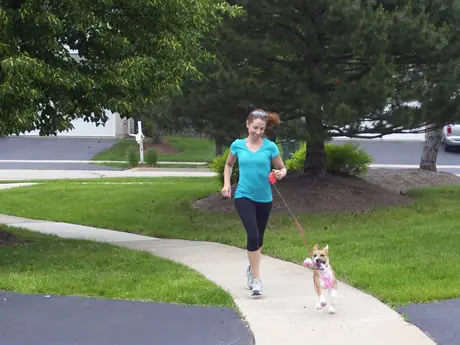
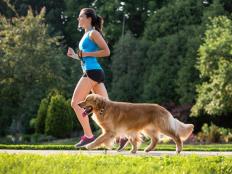
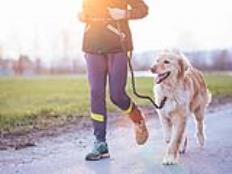
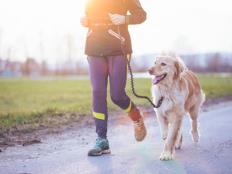
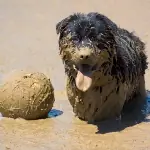
Discuss This Article